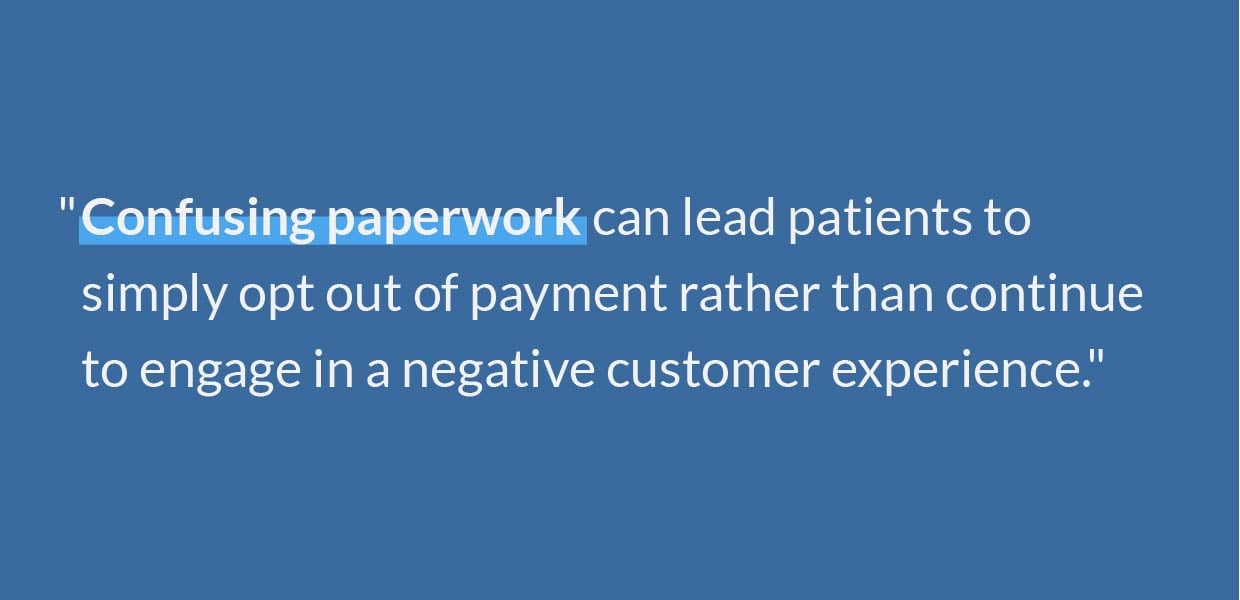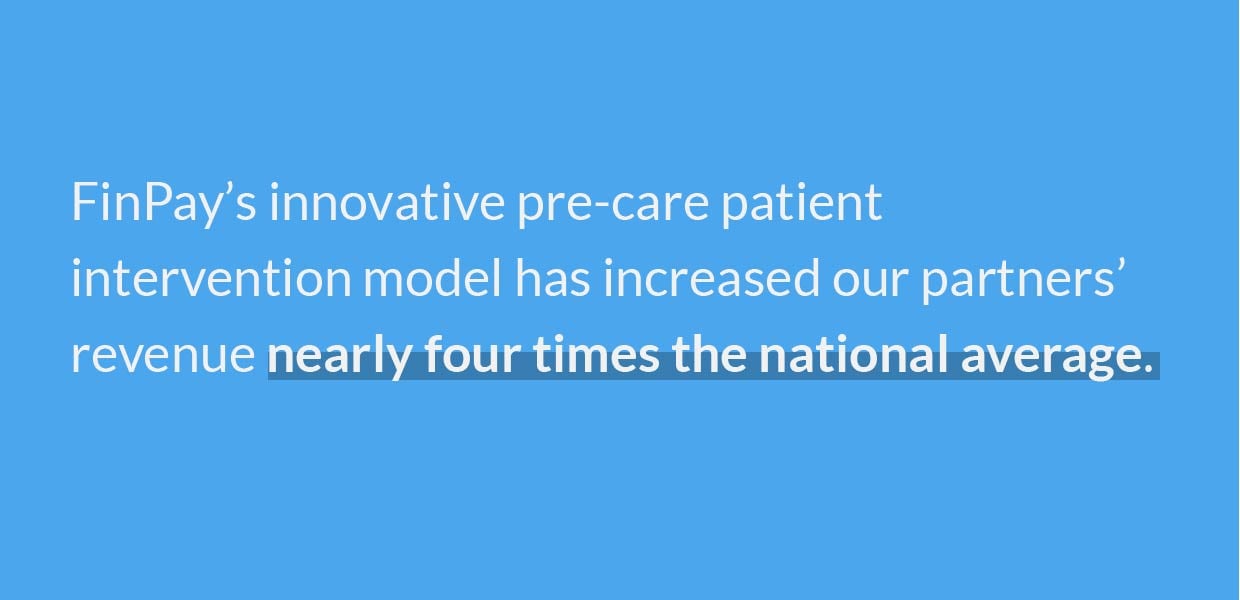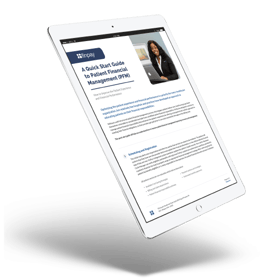For many people in America, the U.S. healthcare system is frustrating, overly complex, opaque, and...
Best Practices of Pre-Care Patient Engagement
October 21, 2019
Written by: John Ziegler
According to a study in the Annals of Family Medicine, the average amount of time that a doctor spent on an individual patient visit was 17.5 minutes. That leaves a lot of time to form an impression of a practice.
Think of it as a restaurant: Ambience counts. So does the time you spend waiting for your food, your interaction with the staff, and, of course, the cost of the meal. It all adds up — and in the era of crowdsourced reviews, these impressions count for a lot. Would you make a reservation to have an expensive meal at a restaurant with poor online ratings? Similarly, a bad medical billing experience or a surprise charge can overshadow the best physician care and drag down your practice’s satisfaction scores. These low scores can ultimately lead to a decrease in revenue.

Here are some best practices to avoid an experience that leaves a bad taste in your patients’ mouths.
The Problem: Revenue Cycle Management Focused on the End Result
In order for a healthcare organization to stay afloat, it must balance its own financial health with a good relationship with its patients and the larger community. A bad relationship with a patient can mean one lost customer. But a bad reputation among the community can mean a shuttered business.
Worse, with government agencies such as the Centers for Medicaid and Medicare Services (CMS) transitioning to a value-based care model, health care providers that score poorly on patient satisfaction surveys can expect to be reimbursed less.
Receiving complicated or unexpected charges after care can alienate even the most devoted patient. Confusing paperwork can lead patients to simply opt out of payment rather than continue to engage in a negative customer experience. And, as you know the resulting patient debt can often become your problem.
So how can we head off this cycle of lost revenue? By providing patients with a great payment experience before they even walk in your door.

The Solution: Patient Financial Management with a Strong Start
Pre-Care Patient Engagement is the foundation of a patient financial management strategy that will keep both you and your patients happy — and your mutual relationship strong.
Put simply, pre-care patient engagement provides your patients with clear expectations of the cost of a service before the service is rendered. It assesses each patient’s financial literacy and the methods of payment available to them and creates a plan that gives them the support they need to pay for the care they require.
This personalized patient experience provides a foundation for repeat visits and helps health care organizations identify and mitigate barriers to payment before they appear.
With the increase in patient financial responsibility due to high-deductible health plans, pre-care patient engagement has become essential to help providers break the cycle of revenue loss. FinPay’s innovative pre-care patient financial management model has increased our partners’ revenue nearly four times the national average.

FinPay’s Proven Pre-Care Patient Financial Management Model
It all begins with risk stratification. Just as patients can browse ratings for providers, FinPay can determine a risk score for each patient who seeks your services. We use a predictive model to assign a risk stratification score to each case. That score is then used to determine the relevant financial education each patient needs.
FinPay Certified Payment Specialists guide patients through the payment process. This may include a detailed explanation of their personal financial responsibility, an examination of insurance benefits, connection to cost-saving resources, and expedited enrollment in a payment plan.

This extra attention up front gets results: FinPay’s patients pay over half of their patient financial responsibility before care is provided — Clearing their mind of financial stress and clearing the way for a relationship that helps maintain good ratings for both patients and providers.
See how pre-care patient intervention can protect your revenue - Download Our Free "Quick Guide to Patient Financial Management"!






